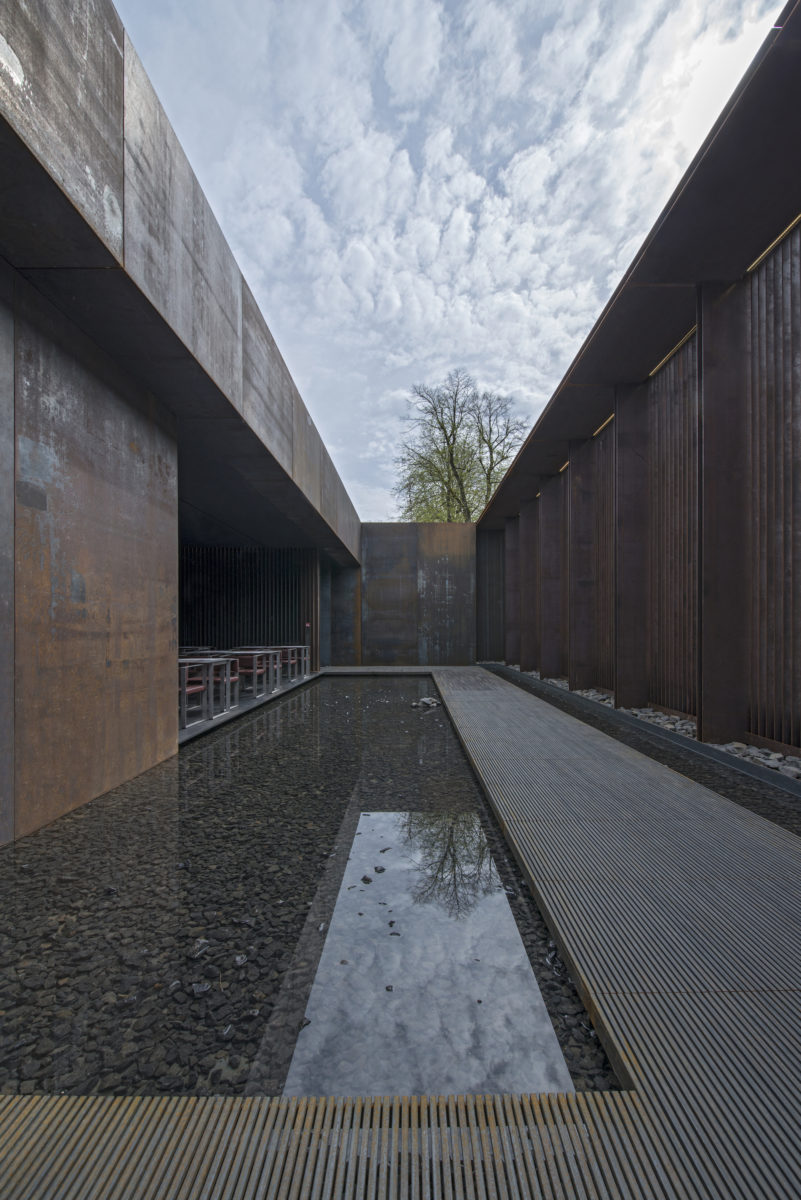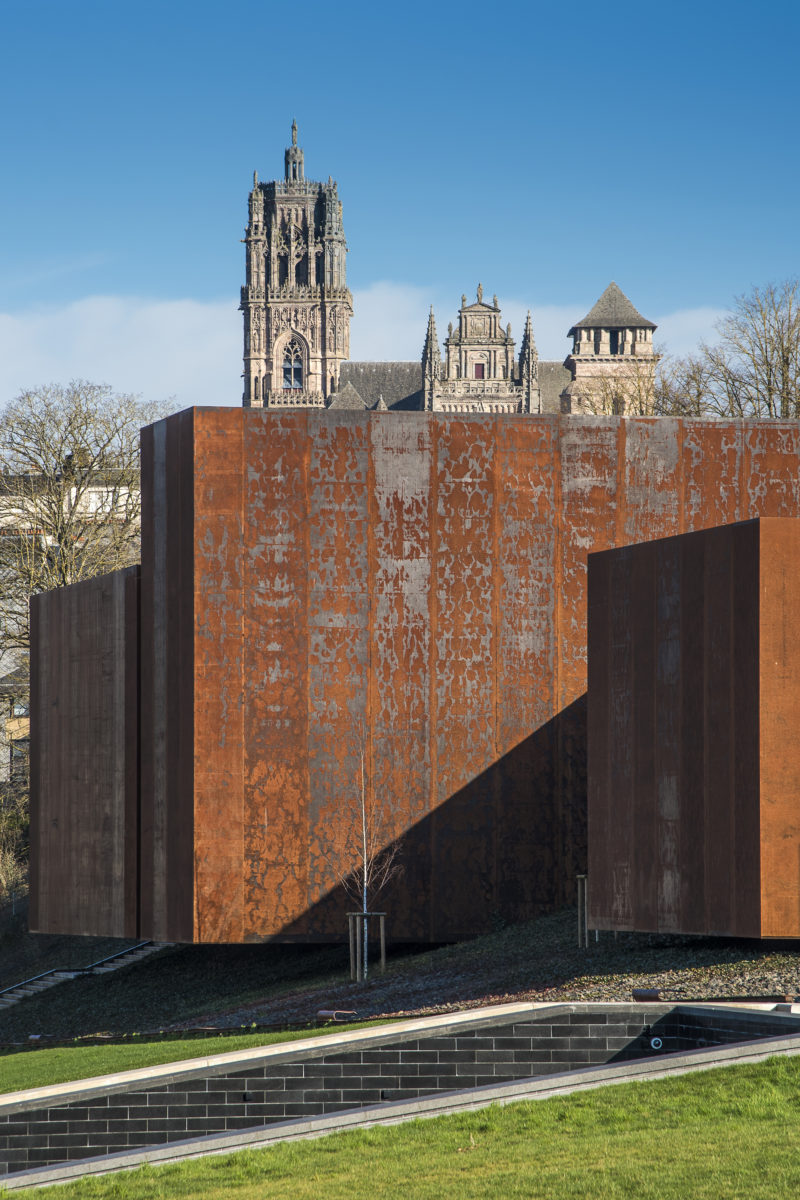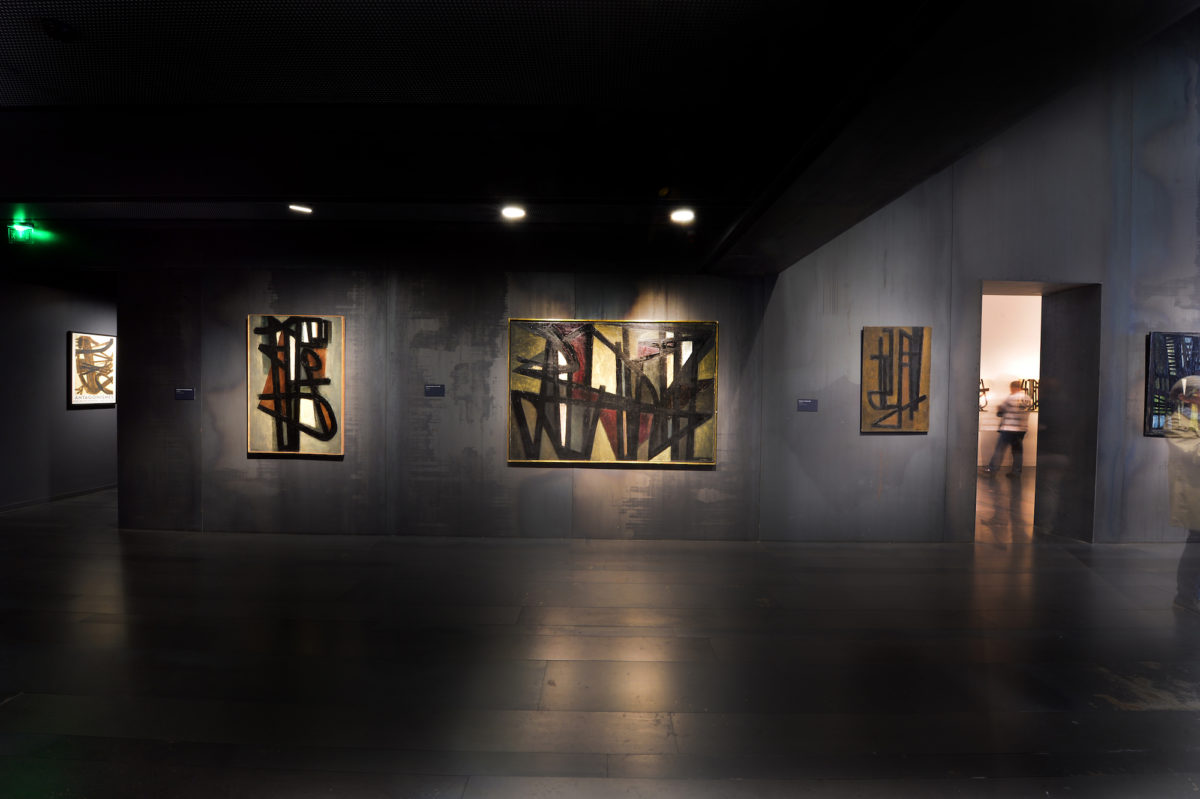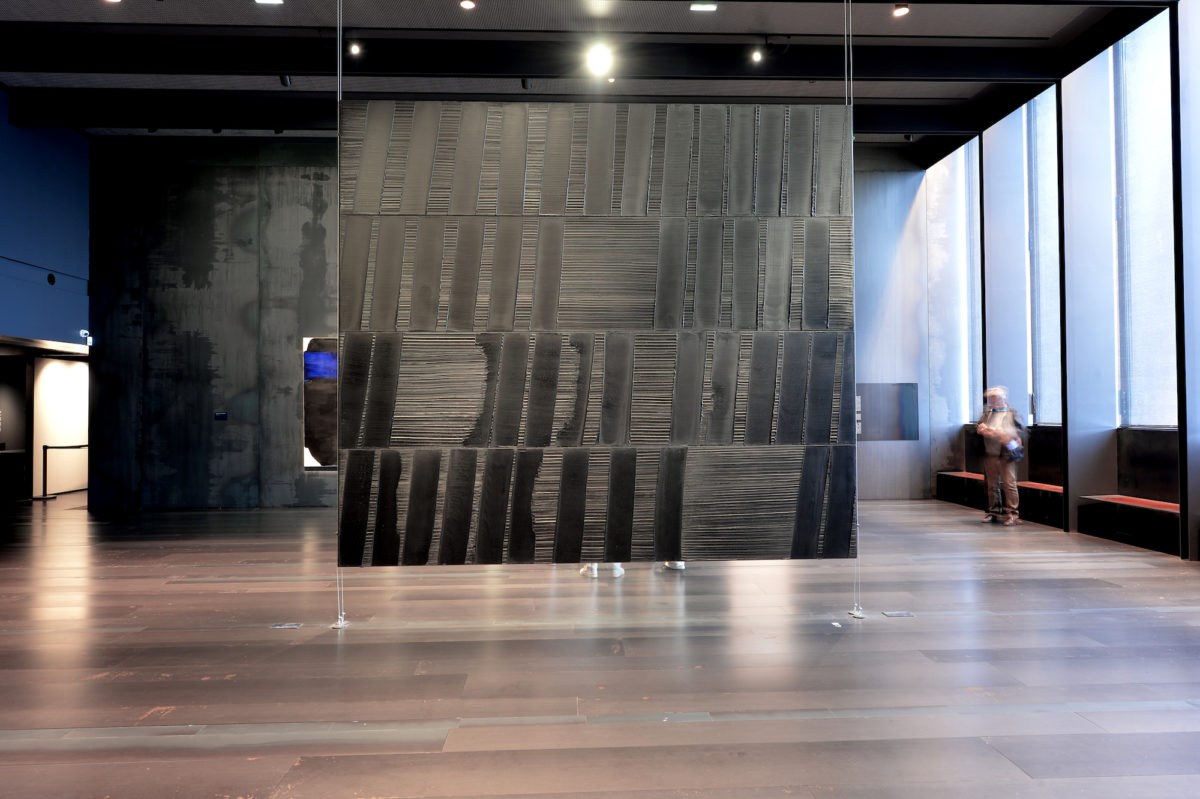
What
A concatenation of angular cuboids snake their way through the Jardin du Foirail in the southern French city of Rodez, their rusted, russet walls harmonising with the green of the surrounding vegetation. This is Musée Soulages, an institution devoted to local hero Pierre Soulages. In 2005, Soulages and his wife Colette donated some 500 works to his hometown. Containing etchings, walnut stains and the paintings for which Soulages is most famous, it covers all eight decades of his career to date. The local council promptly appointed the then little-known Catalan practice RCR Arquitectes who, together with French studio Passelac & Roques, designed a new museum optimised for the display of Soulages work. Open since 2014, the museum also contains major touring exhibitions of other artists, and serves as an artistic hub in a particularly remote, picturesque region.
Who
Soulages is a big deal in France. At the museum’s opening, then French president Francois Hollande declared Soulages “the greatest artist alive”, and last year the Louvre celebrated his 100th birthday by hosting a retrospective, an honour previously only accorded to Picasso and Chagall among living artists. Whether you agree with the French cultural establishment or not, Soulages is an interesting figure whose long career—he began in the late 1940s—makes him a rare surviving link to mid-century modernism.
He staked out his mode early on: thick, almost entirely black abstract marks on canvas, with the white beneath sometimes peeking through. Then, in the late 1970s, he took things a step further by developing his “outrenoir” (beyond black) technique. Noting that different thicknesses of black paint produce different reflective effects, Soulages began exploiting these qualities to create all-black works that display intense interplay between darkness and light. “When light is reflected on black,” he has said, “it transforms and transmutes it. It opens a mental field all of its own.” Offering an intense, contemplative experience akin to those of the abstract expressionists, Soulages’ slow-burn art provides something of a relief from the frenetic pace of much contemporary production.
Where
Rodez is an ancient city in the western foothills of the Massif Central, the verdant uplands in the centre of southern France. Its central landmark remains the Notre Dame Cathedral, a gothic colossus in distinctive pink limestone. Set within a nearby public park, the Musée Soulages’ restrained, limber forms offer a striking contrast to the soaring cathedral. RCR has called the building “a space that is as close to nature as possible, enchanting our sense that we are part of it.” Its Cor-Ten steel facades are designed to weather with time, and in doing so merge into the surrounding nature. Inside, the visitor travels through a sequence of rooms connected by corridors and bridges. The interiors alternative between light-filled and darkened, mimicking Soulages’ work and magnifying their power. Acclaimed on completion, the building was later cited when RCR Arquitectes became the surprise winners of the 2017 Pritzker Prize, architecture’s highest honour.

Why
The degree to which RCR’s building matches Soulages’ art is extraordinary even by the standards of single artist museums, to the point where after visiting it can be different to imagine seeing his works in a less optimised setting. Since the 1970s Soulages has been interested in breaking away from canvas-on-wall convention, and the Musée allows this aspect of his work to fully flourish, with paintings hang from the ceiling and functioning as wall dividers. Concerned with explaining Soulages’ processes as well as with its final products, the museum offers an acute insight into how its subject actually works. It also serves as a spur for further exploration of the region: amongst the highlights of the collection are the cartoons for Soulages’ 104 stained glass windows in the abbey of Conques, a breathtaking romanesque building a short trip north from Rodez that showcase a different dimension to Soulages’ work.
All images courtesy Musée Soulages. Photographs by Jean-Louis Bories









